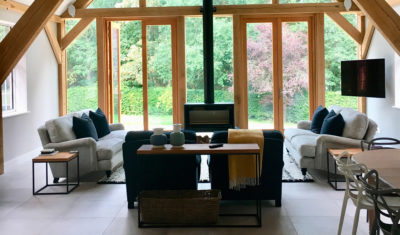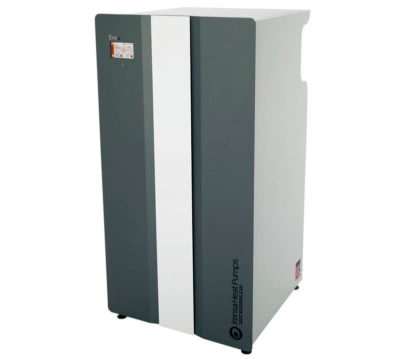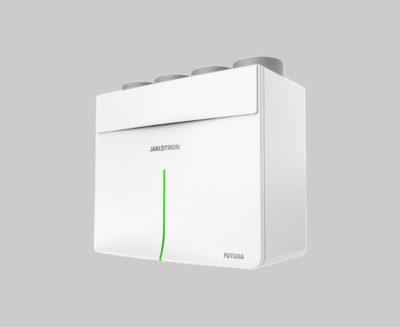Wood Burning Stoves for Modern Homes
As I write, I’m sat next to my wood burning stove which – even though it’s still summer – I have just lit.
The whole process took two minutes, but that’s because there were newspapers to hand, plenty of kindling prepared, the ash pan had recently been emptied and there were logs in the porch ready to fill the basket.
It would have been even quicker if a broadsheet paper been around; they make better firelighters but rarely appear.
Why are stoves so popular?
They say that wood warms you three times: when you’re collecting it, cutting it, and burning it. All true, but to this I would add one more – stacking it – as firewood generally needs to be properly stacked at least once in a dry place after it has been cut and split. It’s a work-out, though, and good practice for tasks like dry stone walling.
Explore more: Heating and Ventilation Products
But does it still make sense to have a stove in a modern home which, of course, needs very little space heating? Take a Passivhaus, for instance. Given the high levels of insulation and good airtightness in these buildings, the warmth from people and appliances is almost sufficient to maintain a comfortable year-round temperature.

The HWAM 4660 is a woodburning stove with a nominal heat output of 7kW
A wood burning stove is often capable of satisfying the remaining heat demand for the whole building, though this depends on the size and layout. Distribution is likely to be uneven, but before central heating, this was not considered an issue. When radiant heat was king, if you were cold you moved closer to the fire and, if too hot, you moved away.
In many cases, people want a wood burner for the effect, and the psychological benefits of flickering flames should not be underestimated. Nothing beats the immediacy, smell and primal experience of an open fire, but they are inefficient and would contravene modern airtightness regulations in any case. So a stove is a fair compromise, and you can save the open fire for the campsite.
Bear with me, though… I need to put a log on the fire and turn down the heat. Clearly stoves have fringe benefits – a useful reminder to get up from the desk occasionally!
Types of stove
A simple wood burner is just a space heater. Multi fuel versions can also run on the likes of coal and anthracite, but I wouldn’t want to encourage anyone to use fossil fuels.
Some stoves have back boilers. Coal models of this type were once common, and the heat was piped to provide domestic hot water (DHW), distributed space heating or both. For modern homes, a back boiler is really worth considering, especially for DHW provision.
Combine with solar thermal panels and this setup can produce carbon neutral hot water all year round – often a target for the eco-minded. If the sun is out, it will warm your solar
panels; if it’s not, you’ll be lighting the wood burner.
Bear in mind an immersion heater may still be needed to top up the temperature on cloudy summer days. A back boiler does reduce the heat output from the stove to the room, but in a modern home this shouldn’t be an issue.
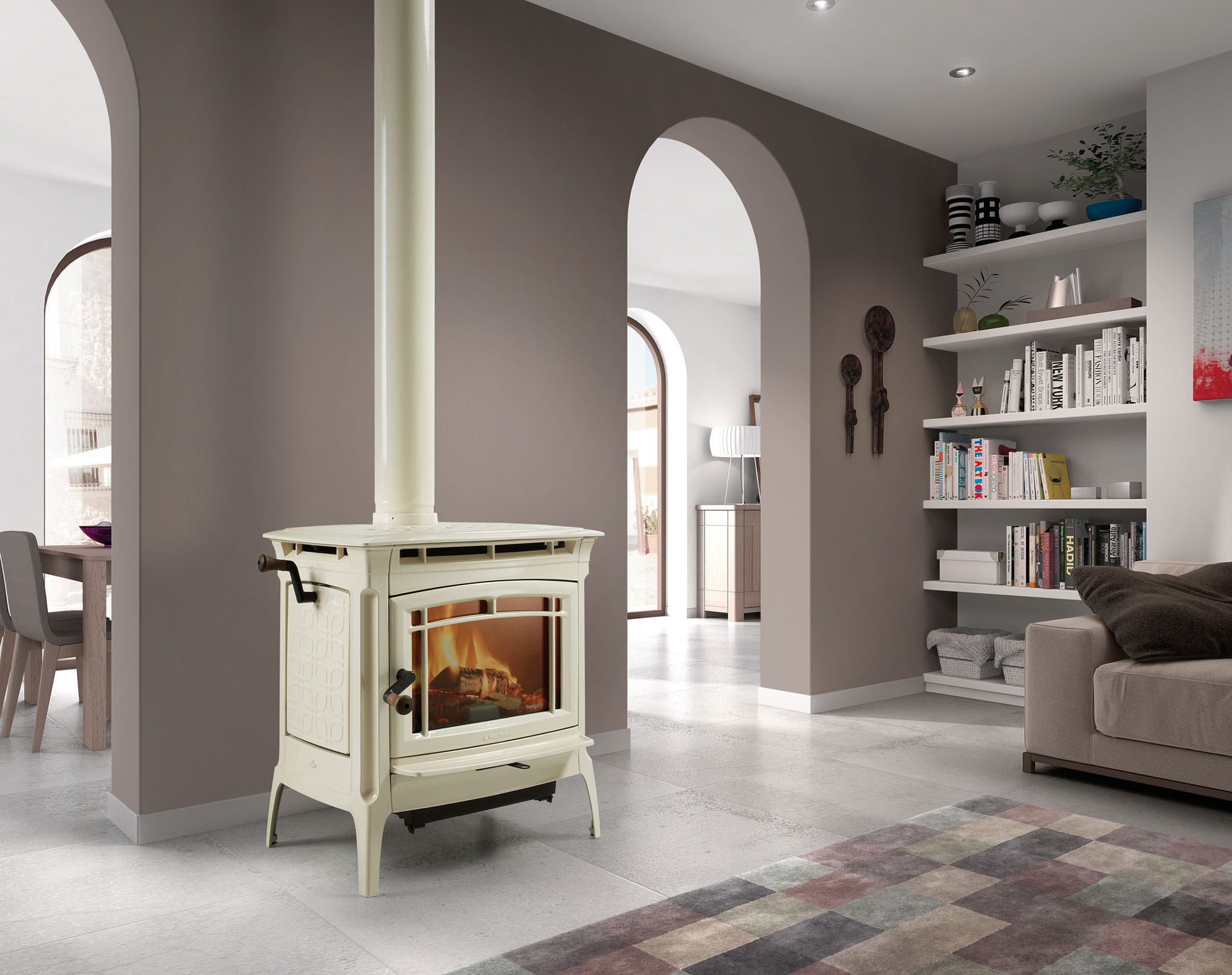
The ivory enamelled Manchester wood burner is available from Eurostove and has a nominal output of 12.6kW
If you are only an occasional user of your wood stove, then there is little point fitting a back boiler – as space heating and hot water are needed on a daily basis. If you want constant carbon-neutral heating in this kind of scenario, then consider a small biomass boiler.
These appliances can be automated just like a gas boiler, and unlike standard stoves they are subsidised with cashback payments under the Renewable Heat Incentive (RHI).
Find out more: Biomass Boilers Explained
As so many wood burners are fitted for their looks and effect, the last few years have seen a wide range of stylish appliances emerging onto the market. You’ll find anything from classic cast iron stoves to all-glazed versions and sharp Scandinavian designs.
With most modern products, the glass is kept clean by an airwash system – reducing maintenance. Heat distribution can be improved by adding a fan, which sits on top and is powered purely by the heat. These are usually silent and can even reduce fuel use.
EXPERT VIEW: Ecodesign-ready stoves & ensuring good air qualityMike Coke from Stovax & Gazco reveals how Ecodesign-ready stoves are helping to deliver the next generation of clean, sustainable woodburning appliances: The Ecodesign standard aims to improve air quality. From January 2022, stove manufacturers will only be able to produce Ecodesign appliances. This means they meet stringent air quality and efficiency standards. At The Stovax Heating Group, we’ve just launched an Ecodesign Plus label – marking out the most environmentally-friendly, low-emission stoves and fires available today. Upgrading to an Ecdesign-ready product is a great place to start, but it’s not the only step to good internal air quality. Using a DEFRA-exempt appliance is always a good idea, as these appliances burn cleaner than standard options. Sizing the stove or fire correctly is vital, too. A 5kW stove running at 2kW will not reach the optimum temperature for a clean burn. If you’re using wood as the fuel, always ensure it’s dry. Poor quality, wet wood has a high moisture content, which will deliver poor combustion and increase the production of harmful emissions. Look for fuel bearing the Woodsure Ready to Burn badge or, if buying your own batches of wood, season it at home to a moisture content of 14%-20%. Learn how to light, burn and burn-out your appliance the best way, making sure to follow manufacturers’ instructions. Finally, it’s vital to have the appliance serviced and chimney swept regularly, too. Mike Coke is biomass product development manager at Stovax & Gazco, which includes the luxury Onyx fire and stove brand. He has been advising homeowners on biomass and other renewable heating solutions for over 10 years. |
Some designers have reverted to an old idea, creating modern wood burners you can cook on. This makes a huge amount of sense: why use electricity to boil water when you can simply place a (non-electric!) kettle on the stove?
More sophisticated versions include a full-blown oven; and you can even get cooker stoves with back boilers – perfect for completely off-grid homes.
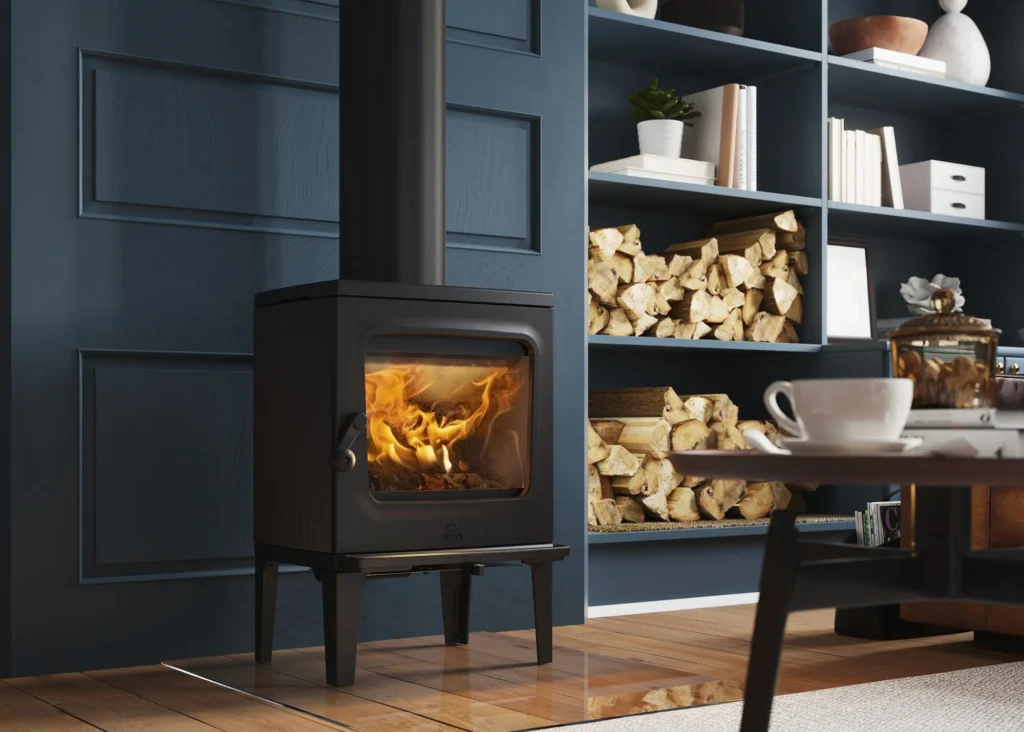
The Jotul F 205 woodburning stove has a compact yet robust design that’ll perform well and warm your space effectively. You can control the air flow easily with just one lever and emptying of ash is made simple with an easily accessible ash solution
Are wood burners carbon neutral?
One big advantage of using wood as a fuel is that it can be an almost carbon-neutral source of heat, depending on the source of the firewood. In the carbon cycle, trees take up CO2 as they grow and this is released when wood is burnt.
In between you have energy used for harvesting, transporting and processing. This cycle absolutely relies on timber being replanted – so the best option is to only burn waste wood (of a suitable quality) or fuel you are certain comes from sustainable sources.
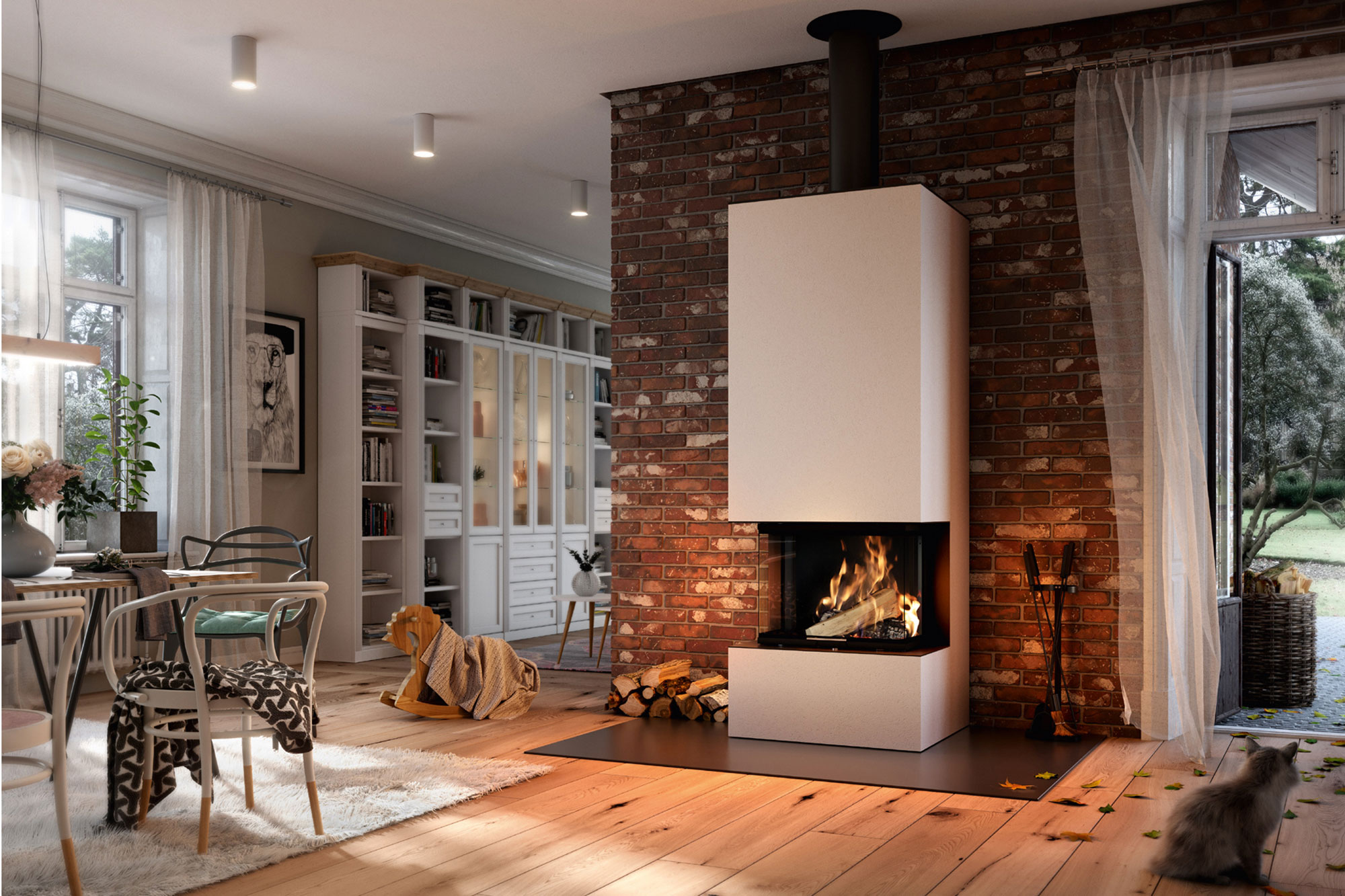
Dru’s SP Varia built-in wood burner gives the effect of an open fie thanks to its large glazed area, but with the energy efficiency
Ideally, firewood will come from as close as possible to where it’s being used to minimise transport impact. Offcuts from local sawmills are good, and smaller sizes make great kindling.
If burning waste wood, avoid treated or painted timber, as domestic stoves don’t filter the gases produced and there may be a detrimental impact on flue liners.
Impact on air quality
Wood does not give off solely CO2 when it burns; there are a range of other potential pollutants, as well as a number of ways to combat these. One of the biggest arises because the smoke is comprised not only of gases but also small particulates of unburnt fuel.
Fine particulate matter (PM2.5) has been identified as having an effect on human health, especially respiratory diseases, when present in sufficient concentration for a sufficient period.
The air in our cities is much cleaner now than when we burnt coal, but there is concern that the increasing prevalence of wood burners could cause an issue once again. In practice, smoke is unlikely to be a problem in rural areas due to the limited housing density. Meanwhile, larger conurbations are covered by smoke control areas, set by the local authority (there’s a useful summary of them at UK Smoke Control Area).
If you live in a smoke control area, you can only burn wood in specified exempt appliances. If your stove isn’t on the list (see GOV.UK), then you will be limited to using authorised smokeless fuels.
Exempt appliances simply prevent slow burning, which means you can’t turn the heat down as far – but low temperatures will leave tar in the flue, so should be avoided in any case. Even stoves that meet these requirements will still contribute to PM2.5 levels in the air.
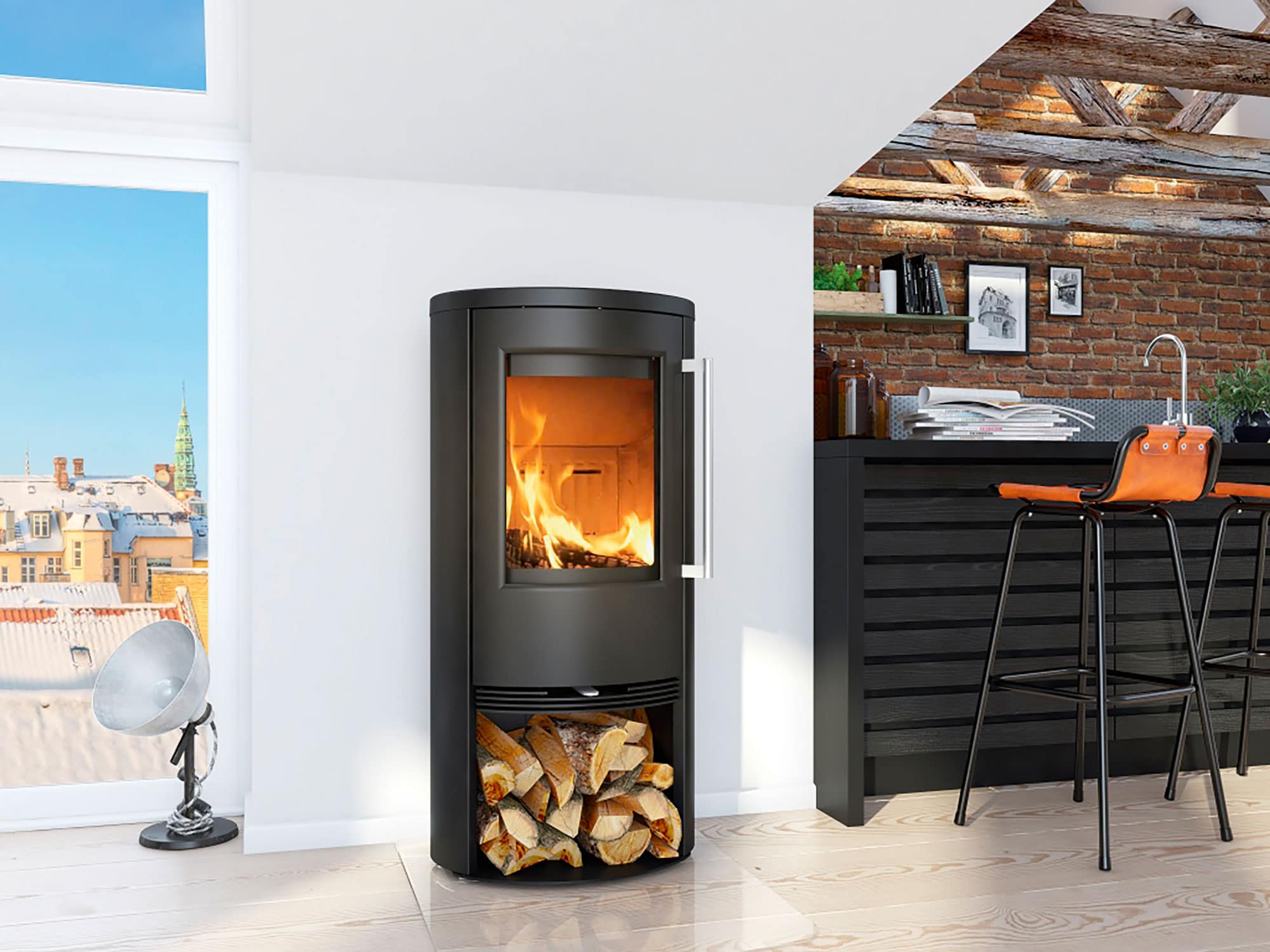
The TT21 R wood burner from TermaTech has an elliptical design and an operating range
Manufacturers are responding to this with the launch of Ecodesign-ready stoves that meet more stringent criteria for air quality(in advance of legislation coming in 2022).
The most important thing when burning wood, however, is to always make sure it’s well-seasoned. Air pollution is much worse from wet timber, as different chemicals are produced during combustion. Most wood requires atleast two summers to season properly, although some softwoods can be ready quicker. For the sake of your stove, fuel conservation and air quality, get well ahead with your supplies and buy a moisture meter.
Stoves need oxygen to function, so they’re usually designed to draw fresh air in via a vent through the wall in the same room as the heater. Other solutions are available in airtight houses. If you’re opening doors, either when first lit or later when the fire is set to burn low, do so slowly at first, as this will prevent smoke blowing back into the room.
Ultimately, tricks like this will help ensure that your indoor living environment is only improved by using a stove.
Are wood burning stoves a good idea for new build homes?
We’ve used wood to cook and to stay warm for millennia. If everyone used it now, however, there wouldn’t be enough to go around – so most of us will be reliant on other fuel sources for heat.
Installation and maintenanceThese days, fitting a stove is not usually a DIY job. If you do not use an installer registered with a self-certification scheme (such as HETAS), then you have to notify building control, pay the inspection fee and carry out the work in accordance with the relevant Approved Documents. Flues now have to be lined so that there is a direct route from your stove to the open air, and no risk of fumes entering a building, so most of us prefer to leave it to the pros. Day to day maintenance on stoves is limited to ash removal, though wood burners actually produce very little of this. Wood ash is rich in many micronutrients – especially potash, so it can be added directly to the garden or mixed in with the compost heap, giving you an extra benefit. Depending on frequency of use, a regular visit from the chimney sweep is a must. For lined flues especially, the job is quick and clean. |
But if you have a local supply of firewood (especially if it’s waste) and the source is being replanted, I would argue it makes a lot of sense to use this rather than any other source of fuel.
Ultimately, a well operated stove burning dry firewood can be eco-friendly and cost-efficient to run, and will produce very little smoke. And the time you spend outside chopping wood and staying warm and fit, you’re not having to heat the house!
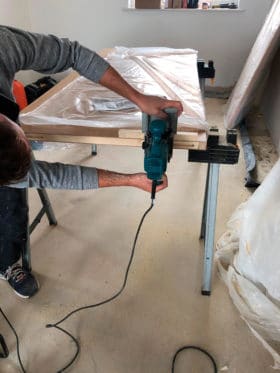
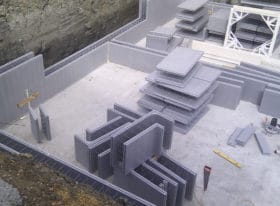















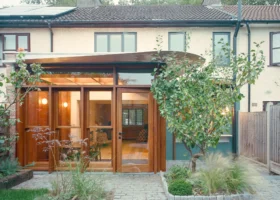

































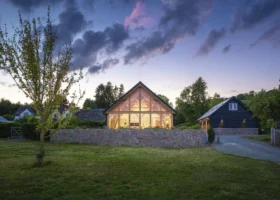













































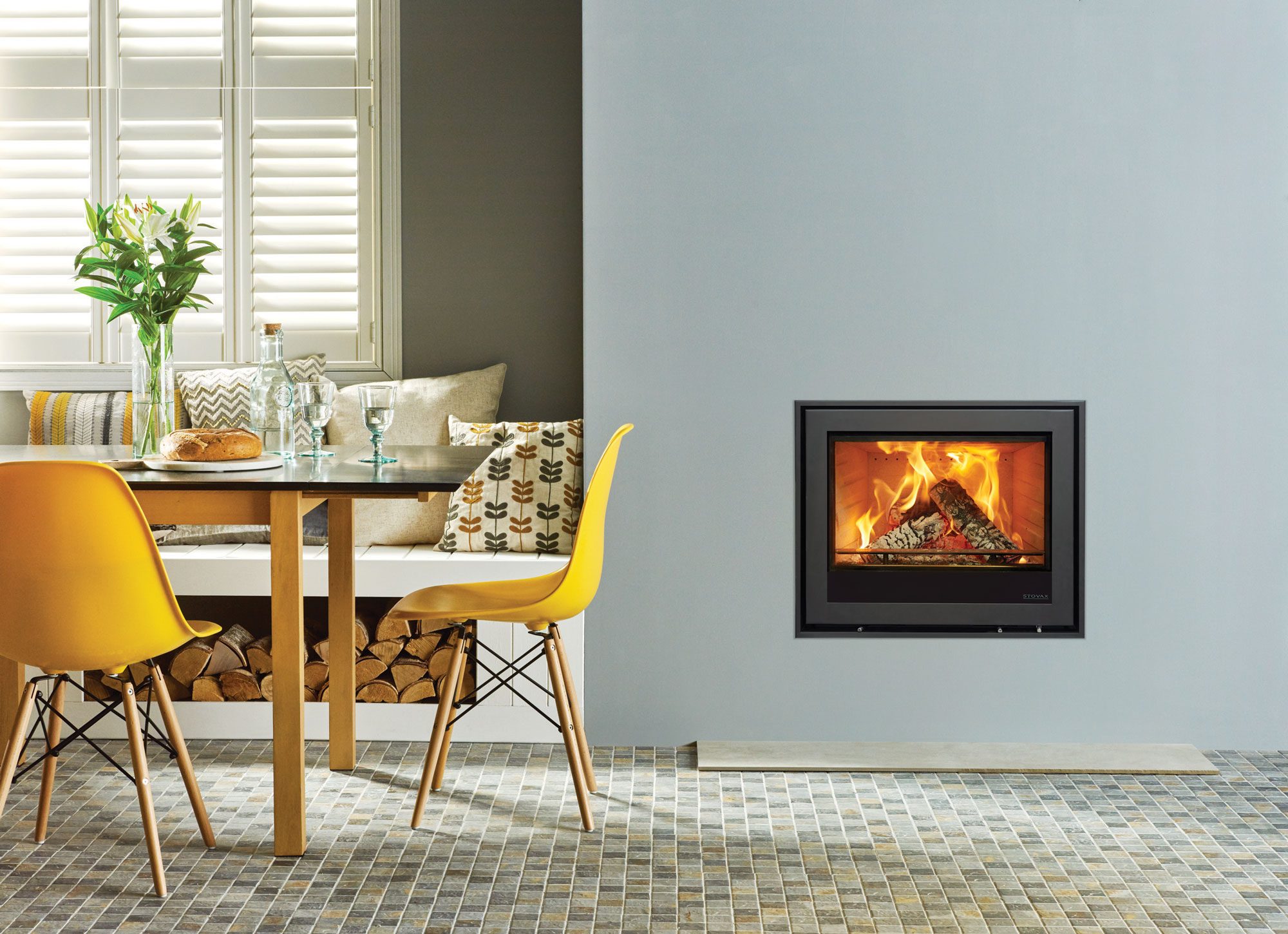
 Login/register to save Article for later
Login/register to save Article for later




